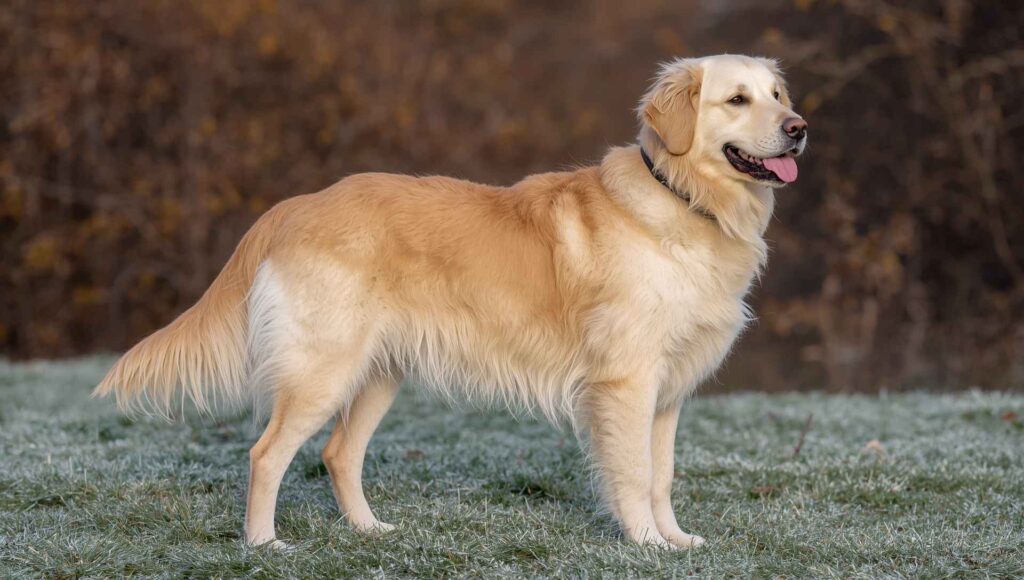Golden Retriever: America’s Most Beloved Family Companion

The golden retriever stands as one of America’s most cherished canine companions, consistently ranking among the top dog breeds for families across the United States. This breed takes the top spot as the most popular dog in both Washington state and nationwide, according to recent research. This comprehensive guide explores everything you need to know about this remarkable dog, from temperament and health to lifestyle needs that every owner should understand.
Physical Characteristics and Size Standards

This breed exhibits distinctive physical traits that make them instantly recognizable and highly desirable as family pets. Males typically reach 23–24 inches in height and weigh 65–75 pounds, while females are slightly smaller at 21.5–22.5 inches tall and 55–65 pounds in weight. Their sturdy build reflects their history as sporting dogs bred for endurance and strength.
Coloring varies significantly, ranging from light cream to deep golden hues. Their signature double coat serves both beauty and function. It requires regular maintenance since these dogs are heavy shedders throughout the year.
The structure of this breed reflects their heritage as water retrievers. Their thick coat is longer on the neck, thighs, tail, and back of the legs, offering insulation during swimming and outdoor activities. Combined with webbed feet and muscular frames, these features make them outstanding swimmers.
Golden Retriever Size Comparison Table
| Gender | Height | Weight | Build Type |
|---|---|---|---|
| Males | 23–24 inches | 65–75 lbs | Larger, more robust |
| Females | 21.5–22.5 inches | 55–65 lbs | Smaller, more refined |
Temperament and Personality Traits
The temperament of this breed represents its most valuable characteristic. Known for being kind, trusting, and gentle, they are poor guard dogs but outstanding companions. Their naturally friendly disposition and eagerness to please have made them one of the most beloved family pets in the world.
“They are not just dogs; they are sunshine wrapped in fur,” notes one experienced breeder.
Intelligence also ranks high among their traits. Playful, active, and highly trainable, they suit both first-time owners and experienced handlers. Generations of selective breeding for cooperation and loyalty have cemented their reputation as one of the most dependable dogs.
Their patient nature makes them excellent with children, other pets, and even strangers. However, their trusting temperament means owners must protect them from those who may take advantage of such friendliness.
Health Statistics and Common Conditions
A 2024 UK study reported an average life expectancy of 13.2 years, slightly higher than the 12.7 years observed for purebred dogs overall. This is encouraging news for potential owners.
However, health challenges remain significant. Research from the University of California revealed that about 65% of the breed will develop cancer during their lifetime. According to the Golden Retriever Club of America, cancer caused 61% of deaths in one study, with hemangiosarcoma, lymphoma, mast cell tumors, and osteosarcoma being the most common.
Hip Dysplasia Risks
Hip dysplasia occurs at concerning rates in this breed. Neutering before one year of age has been linked to doubling the risk in males. Environmental factors such as rapid growth, poor nutrition, or inappropriate exercise can further worsen the condition.
Responsible breeding, careful diet management, and proper activity routines help reduce the risks of orthopedic disease.
Exercise and Activity Requirements

These dogs require substantial daily activity to remain healthy and happy. At least 60–90 minutes of combined physical and mental exercise is ideal.
Swimming is particularly beneficial, as it provides low-impact exercise while capitalizing on their natural abilities. Puzzle toys, obedience training, and retrieving games further engage their intelligent minds.
“They thrive when given a job—big or small—because purpose is in their DNA,” shares a professional trainer.
Grooming and Maintenance Needs
Grooming reflects the reality of their heavy shedding and double coat. Daily brushing helps control matting and reduces hair around the home, while seasonal changes bring increased shedding regardless of effort.
Professional grooming every 6–8 weeks keeps coats manageable, while regular nail trimming, ear cleaning, and dental care protect overall health. Their floppy ears are especially prone to infections, so extra care is required.
Training and Socialization Guidelines
Training comes naturally due to their intelligence and eagerness to please. Positive reinforcement yields the best results.
Early socialization between 3–14 weeks is critical to building confidence. Exposure to varied environments, people, and animals ensures well-adjusted adult dogs.
Many excel in obedience, agility, therapy, and service roles thanks to their adaptability and working drive.
Feeding and Nutrition Considerations
Balanced nutrition supports health from puppyhood through the senior years. High-quality protein maintains muscle, while omega-3 fatty acids promote coat health and reduce inflammation.
Puppies require large-breed formulas to protect joint development, while adults benefit from carefully controlled portions to prevent obesity. Senior dogs often need joint support supplements and diets tailored to slowing metabolisms.
Given their predisposition to cancer, some owners choose antioxidant-rich diets, though veterinary guidance is essential before making major dietary changes.
Choosing the Right Companion
Selecting a healthy puppy requires careful evaluation of breeder practices. Responsible breeders provide health clearances for hip dysplasia, elbow dysplasia, and hereditary eye conditions. Meeting both parents when possible offers insight into likely temperament and adult size.
Rescue adoption also offers a meaningful option, as many organizations specialize in rehoming retrievers. Adopting an adult often means skipping the demanding puppy phase while gaining a companion with a known temperament.
Living Arrangements and Lifestyle Compatibility

These dogs adapt to various lifestyles but require consistent exercise. They can live in apartments if owners commit to meeting daily activity needs, though homes with yards remain ideal.
Their patient nature with children, tolerance of other pets, and devotion to family members make them a perfect fit for many households. However, supervision is recommended around toddlers due to their size.
Their dense coats protect against cold climates but pose challenges in hot, humid areas. Owners in warmer regions must provide shade, cooling options, and adjust exercise times.
For more in-depth information, Golden Retriever Guides provides resources for both new and experienced owners. Additional veterinary advice can be found through reputable research institutions.
Conclusion
The golden retriever has rightfully earned its reputation as America’s sweetheart thanks to its beauty, loyalty, and intelligence. While health challenges such as cancer and hip dysplasia demand vigilance, proper care, nutrition, and veterinary support allow these dogs to live long, fulfilling lives.
Their adaptability makes them suitable for a wide range of households, from active outdoor enthusiasts to families with young children. Understanding their needs ensures a relationship built on trust, joy, and companionship. With everything this breed brings to the table, could there be a more rewarding addition to your family than a golden retriever?






